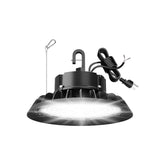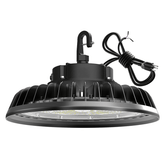Solve common performance problems caused by power quality issues
We've discussed some common performance issues that can result from power quality issues in LED lights, now let's discuss some practical advice to help you troubleshoot and resolve these issues.
1. The voltage is unstable
The most common problems, such as flashing lights, are usually caused by voltage instability in the power system. When the voltage fluctuates, it makes the LED light blink. Sudden changes in voltage levels can even make LED lights randomly turn on/off or have inconsistent brightness levels
To solve this problem:
- Check voltage levels at different points in the electrical system.
- Identify potential power quality issues.
- After assessing the overall power quality of the electrical system, it is best to consult a qualified electrician to solve the voltage stability problem that affects the performance of the LED lamp.
2. Poor grounding
Poor grounding is another power quality problem that affects the performance of LED lights. Insufficient grounding can lead to electromagnetic interference (EMI), making the LED lamp work unstable or shorten the life.
To reduce these problems:
- Ensure that the ground wire is firmly connected to the grounding electrode.
- Use shielding technology to reduce electromagnetic interference.
3. Intrusion current
Inrush current occurs when electrical equipment is switched on and current is generated. LED lights are sensitive to inrush current. Excessive or uncontrolled surge may even cause the lamp to fail completely.
To solve this problem:
- Use an LED driver or power supply with soft start function to limit surge current. This protection helps keep work smooth and safe.
- When you have long-term performance issues with LED lights, it is necessary to evaluate the overall power quality of the power system. By addressing any potential power quality issues, such as voltage instability, poor grounding, or excessive surge current, you can improve the performance and life of your LED lights.
It is important to note that:
- A qualified electrician will conduct a thorough assessment of your electrical system and recommend appropriate solutions. If you have a power quality issue and need an electrician's help, please contact our team.
- See the next section to learn how to ensure good power quality for LED lighting Settings.
- Ensure good power quality for your LED lighting setup
- Use high quality LED lights
- The first step in optimizing your lighting Settings is to choose high-quality LED lights. The ideal lamp should have a high quality led, be UL or ETL certified, and usually carry Energy Star certification and/or be listed by DLC. Having dimming options and other controls is also a great feature, as it helps reduce power consumption.
- Choose the right power supply
- Choose a power supply with stable voltage regulation and surge protection to improve the power quality of LED lighting devices. A high quality power supply consistent with the specific requirements of the LED lights used will ensure the best performance of the system.
Grounding and shielding technology
Proper grounding and shielding technologies are essential to mitigate potential power quality issues caused by external factors such as electromagnetic interference (EMI).
Electrical safety of LED lighting installations
Addressing power quality issues is critical, but so is ensuring the overall electrical safety of LED lighting installations. Readers are urged to follow standard safety guidelines and comply with local wiring regulations during installation and maintenance.
The importance of power quality for LED lights:
1. Understand power quality
Power quality refers to the characteristics of the electrical system that affect the operation of devices such as LED lights. It is influenced by consumer behavior (such as overload circuits), technical factors of the LED bulb itself, and external factors such as electromagnetic interference.
2. The impact of inferior power on LED lights
Poor power quality can cause problems such as flickering, dimming, erratic behavior, or premature failure of LED lights.
3. Solve power quality problems
To address power quality issues, it is important to:
- Choose the right voltage regulator and lightning protection power supply.
- Implement appropriate grounding and shielding technologies to mitigate potential
power quality issues caused by external factors such as electromagnetic interference.
Readers are encouraged to prioritize power quality assessment when solving LED lighting problems and to seek the help of a professional electrician to ensure accurate diagnosis and resolution of power quality issues.
If you encounter any problems when purchasing LED lighting from GGJIA, please do not hesitate to contact our customer support team. We are committed to providing high quality lighting products and comprehensive lighting services.








